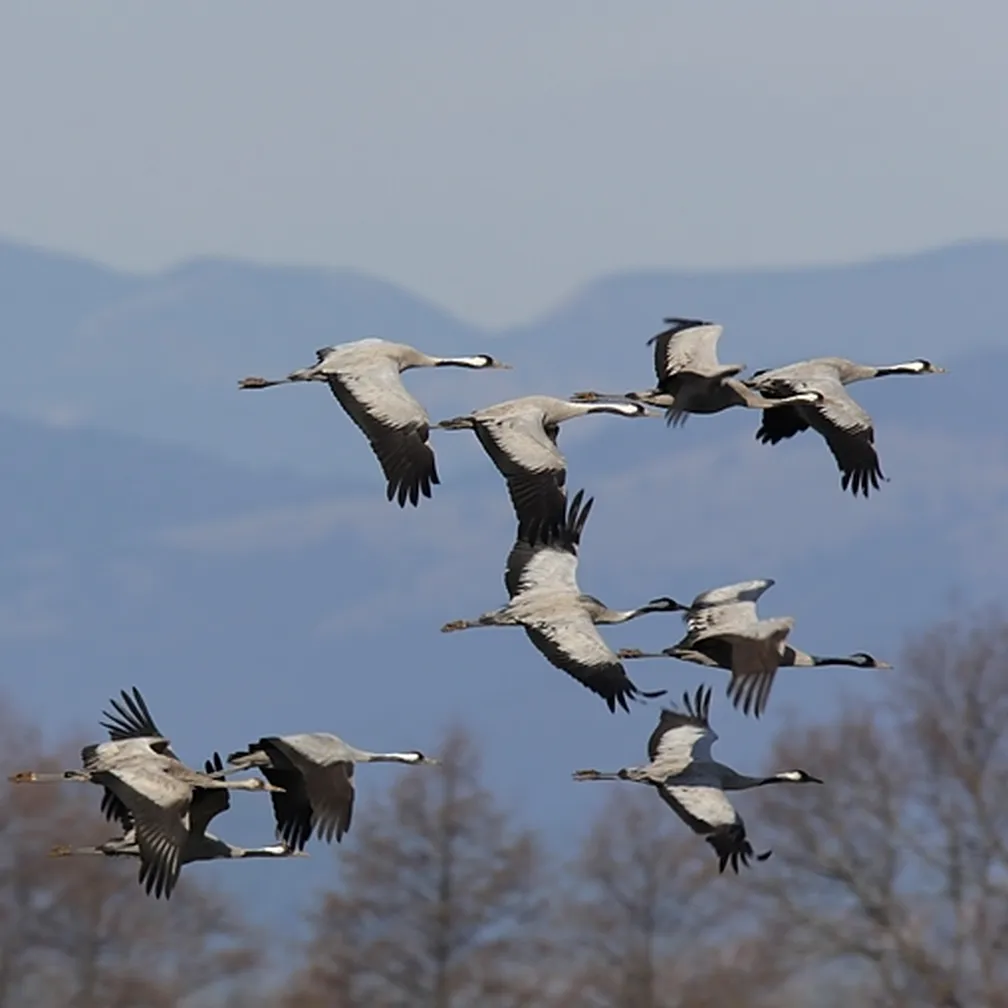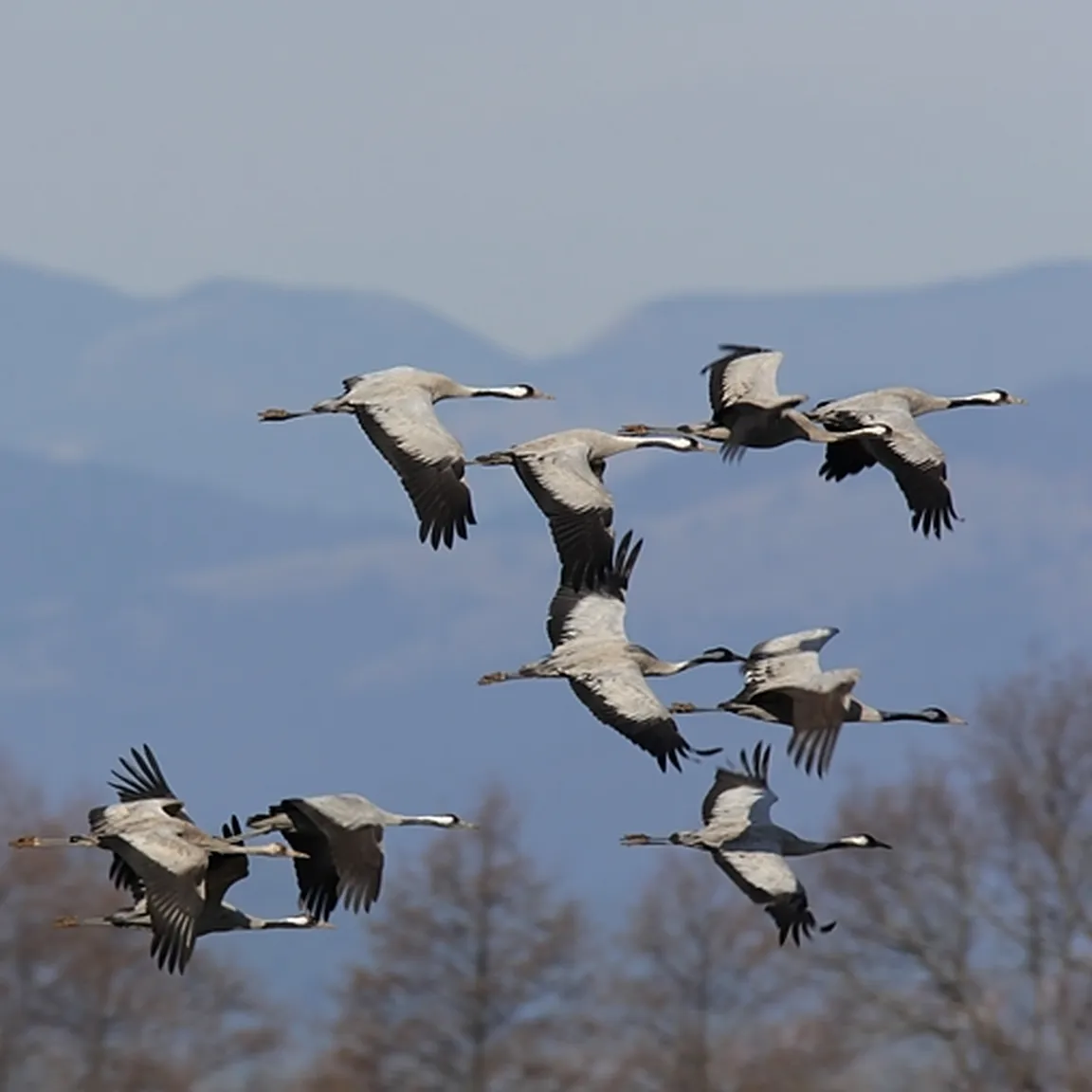
Herons (Gruidae) are very large birds with long legs and long necks. They are characterized by a straight, medium-length dagger-shaped beak. The toes lack webbing; they are adapted for wading through shallow water in wetlands and swamps. Strongly elongated and enlarged outer flight feathers form a bushy tuft that resembles a tail, but in fact the tail is very short and hidden beneath this tuft.
Herons are exceptional gliders and deftly use air currents on their marathon migrations. They fly with their necks extended, just like storks. Herons migrate in flocks in wedge-shaped formations (>). In this way they reduce the air resistance for the birds at the tail of the flock, which therefore use less energy to fly. Over time, when the birds at the head of the flock tire, birds from the rear of the flock replace them. All of it works and resembles a team from a road bicycle race.
Compared to geese, which also migrate in a similar manner, herons are immediately distinguished by their long outstretched legs; in addition, herons fly at greater altitudes. Their dignified posture and measured steps also make them majestic on the ground. Despite their size, herons are shy birds that nest in remote parts of the world. The nest, made from vegetation, is built on the ground. Herons are omnivores. They eat plant shoots, roots, tubers, leaves and fruits; among animals they prey on insects and other invertebrates, fish, amphibians, reptiles, young birds, and small mammals.


